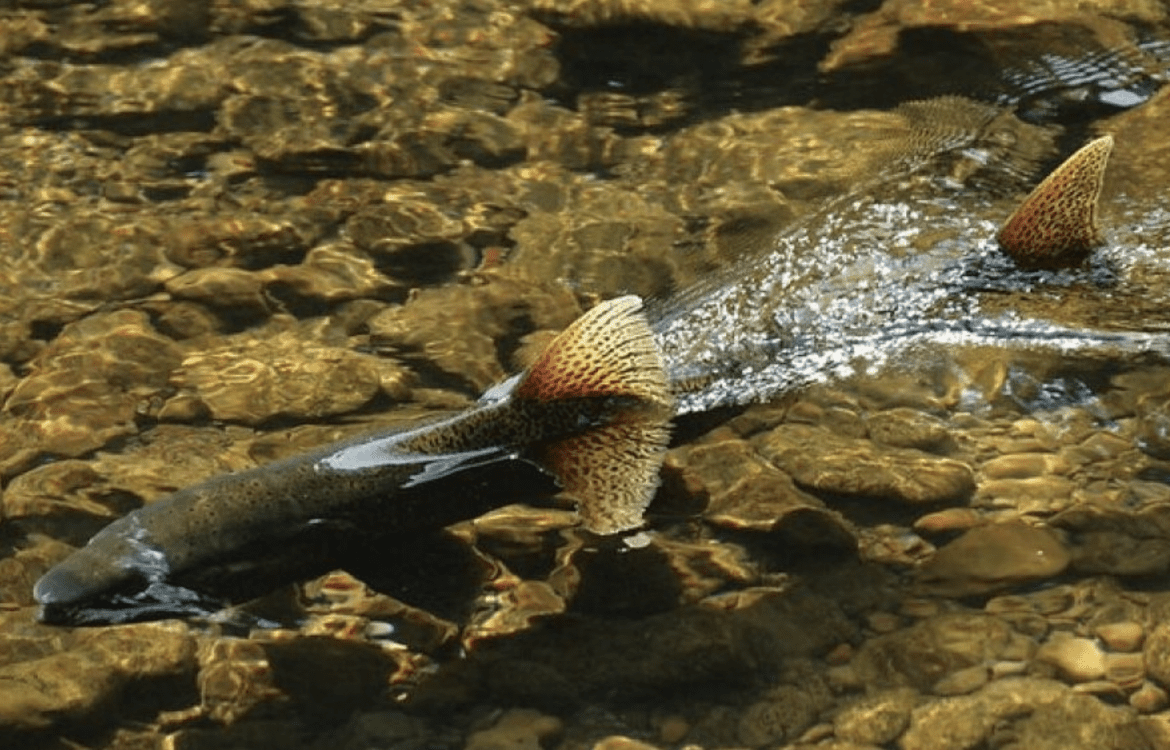
A sense of direction: Paper published on the genetics of animals’ innate magnetic sense
Magnetite crystals that form inside specialized receptor cells of salmon and other animals may have roots in ancient genetic systems that were developed by bacteria and passed to animals long ago through evolutionary genetics.
Renee Bellinger, an adjunct assistant professor in bioinformatics and genomics at the University of Hawai‘i at Hilo, has published a paper showing new research on magnetite in salmon noses that illuminates understanding of sensory mechanisms enabling magnetic perception across life.
Scientists understand that animals such as salmon, butterflies, and birds have an innate magnetic sense, allowing them to use Earth’s magnetic field for navigation to places such as feeding and breeding grounds. But research has come up short on determining exactly how the underlying sensory mechanism for magnetic perception actually works.
The Oregon State University Newsroom reports that in the paper, published this month in the Proceedings of the National Academy of Sciences, an international team of researchers led by Bellinger outlines a new theory. Magnetite crystals that form inside specialized receptor cells of salmon and other animals may have roots in ancient genetic systems that were developed by bacteria and passed to animals long ago through evolutionary genetics.
The theory is based on new evidence from nanoscopic magnetic material found within cells in the noses of salmon.
Bellinger began the research as a doctoral student at Oregon State, completing her doctoral degree in fisheries science in 2014.
“The cells that contain magnetic material are very scarce,” she says. “We weren’t able to definitively prove magnetite as the underlying key to magnetic perception in animals, but our study revealed associated genes as an important tool to find new evidence of how potential magnetic sensors may function.”
“Finding magnetic receptors is like trying to find a needle in haystack,” she adds. “This work paves the way to make the ‘needle’ glow really bright so we can find and understand receptor cells more easily.”
Coauthor Michael Banks, a fisheries genomics, conservation and behavior professor at Oregon State, says, “If we can figure out the way animals such as salmon sense and orient, there’s a lot of potential applications for helping to preserve the species, but also for human applications such as medicine or other orientation technology.”
- Learn more about the research: New research on magnetite in salmon noses illuminates understanding of sensory mechanisms enabling magnetic perception across life (Oregon State University News, Jan, 10, 2022).
Co-authors of the paper are Jiandong Wei of Shanghai University in China; Uwe Hartmann of Saarland University in Germany; Herve Cadiou of the Institute of Cellular and Integrative Neuroscience in France; and Michael Winklhofer of the University of Oldenburg in Germany.
The paper is published under Bellinger’s Oregon State University affiliation, where she initiated this work as a doctoral student.
UH High Performing Compute Cloud
Bellinger says in an email that in the salmon study, she applied skills developed during her post-doc at UH Hilo “to advance the comparative genomics using the UH High Performing Compute Cloud for that data analyses.”
She explains that the UH Compute Cloud is freely available to the UH community, and is a significant resource for genetic research, which typically involves data sets that are too large to analyze on a desktop computer. She says the staff that manage the compute cloud are extraordinarily knowledgeable and helpful.
“It wasn’t until a few years into my post-doc that making comparisons across high-quality genomes became possible, which occurred because of technological advances in long-read sequencing platforms,” she says.
For example, Bellinger used long-read data to sequence the ‘Alalā genome in a project led by Jolene Sutton, and more recently, sequenced the genome of Bidens hawaiensis, a plant that is famous for its adaptive radiation across the Hawaiian archipelago. The Bidens genome project was in partnership with Matt Knope, a biology professor at UH Hilo who has studied Bidens for over a decade. Other contributors included Erin Datlof, formerly of UH Hilo who now works with the Hawai‘i Plant Extinction Prevention Program, Tim Gallaher of the Bishop Museum, and Karen Selph from the UH Mānoa Department of Oceanography.
Collaborative work
In addition to her work at UH Hilo serving on student committees and mentoring interns, Bellinger has taken a new full time permanent position with the U.S. Geological Survey, Pacific Island Ecosystems Science Center, based in Volcano on Hawai‘i Island.
In this new position, she is a research geneticist primarily focused on the study of the southern house mosquito (Culex quinquefasciatus) that vectors avian malaria, a problem which is devastating to Hawaiian forest bird populations. Bellinger is working with Stephanie Mladnich in biologist Pat Hart‘s lab at UH Hilo testing an eDNA assay to serve as a tool to detect mosquito DNA in water samples obtained in potential breeding habitat.
By Susan Enright, a public information specialist for the Office of the Chancellor and editor of UH Hilo Stories. She received her bachelor of arts in English and certificate in women’s studies from UH Hilo.
